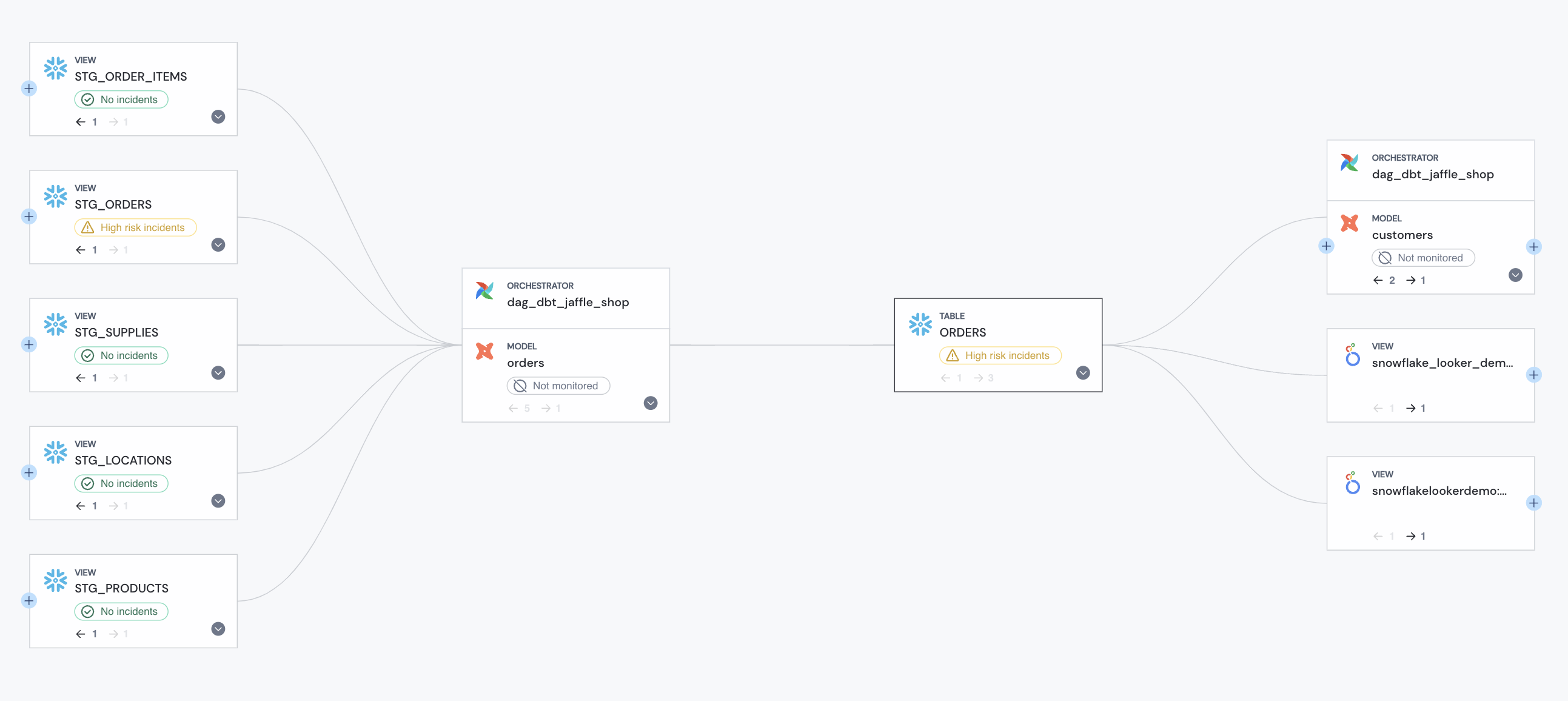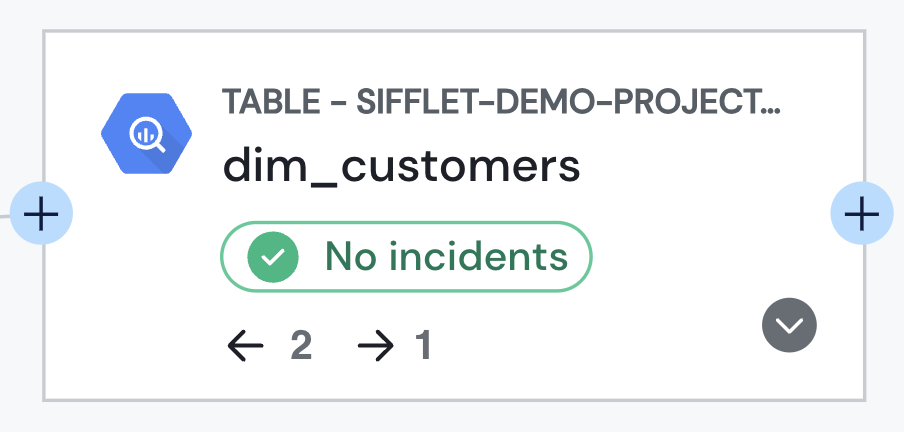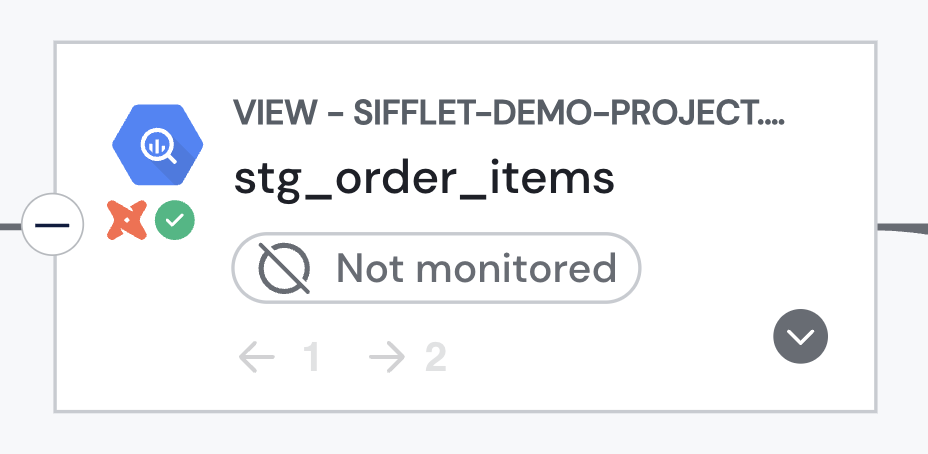Lineage
Overview
Lineage allows you to visualize the complete lifecycle of your data, from its origin to its destination.
A fully-fledged lineage can notably help your team with:
- Root cause analysis: identify where an issue might have originated from by looking at the upstream dependencies of your asset.
- Business impact assessment: spot which teams might be impacted by an issue by looking at downstream dependencies of your asset.
- Knowledge sharing: make your data lifecycle easy to understand for any new joiner on the team.
- Monitoring coverage: ensure critical assets that feed a lot of other assets are being properly monitored.

Example Lineage
Navigate the Lineage
To access the lineage view of an asset:
- Click the
Data Catalogentry on the sidebar of your Sifflet application - Search for your asset of interest
- Click its card on the Data Catalog results list
- Once on the asset page, go to the
Lineagetab.
Lineage Node
Lineage node tiles contain details about the asset's:
- Technology
- Type
- Fully qualified name: currently available for
Tables & Viewsassets and declared assets - Name
- Health status: currently available for
Tables & Viewsassets - Number of direct upstream and downstream assets
Click a lineage node tile to open up a side panel containing more information about the asset.
Click the downward arrow to open up the list of dataset fields.
Actions
Expand Nodes
Click the + button on either sides of a lineage node to display the linked tables, either upstream or downstream.

Expand Nodes
Tip - Bulk Expand NodesBy holding the
SHIFTkey when clicking the+button on your lineage node, you can bulk expand nodes by two additional levels.
Retract Nodes
Click the - button on a lineage node to fold the linked assets.

Retract Nodes
Show Asset Fields
Click the arrow on the right of the lineage node to see its fields and types.

Click the Arrow to Show Fields

Lineage Node After Showing Fields
Show Field-Level Lineage
By default, the links are at table level. To display the field-level lineage between two tables, you need to display fields on those two tables by clicking the right arrow on the right of both lineage nodes or using the Show/Hide all fields button of the toolbar.
Lineage Side Panel
Clicking a lineage node tile opens up a side panel containing more information about the asset.
The top of lineage side panels contain details about the asset's:
- Technology
- Type
- Fully qualified name: currently available for
Tables & Viewsassets and declared assets - Name
It also allows you to perform various actions on your assets such as: visit the asset details page, see the SQL query associated with the asset, preview the first rows of your Tables & Views assets.
The below section contains more details about your asset:
- Sifflet source name and last refresh date
- Description, which can be automatically extracted from your source and/or manually edited by your team on Sifflet
- Tags
- Business terms
- Domains
- Owners
- Data usage (only
Tables & Views,Dashboards) - Time windows & offset (only
Tables & Views)
Toolbar

Lineage Toolbar
The toolbar enables you to use additional features.
Filter
Click the funnel icon and tick the Fields with links only to only display the fields that are linked to others.
Undo
Click the bended arrow icon to go back to the previous view after, for instance, expanding some nodes.
Refresh
Click the rounded arrow icon to go back to the original lineage view.
Show/Hide all fields
Click the up and down arrows to show or hide all fields of displayed lineage nodes.
Explore mode ON/OFF
If you have a view with an overwhelming number of tables and fields, navigating the lineage to understand dependencies can be tricky. You can focus on a given table or field by:
- pressing the discover button on the top left OR holding the
Controlkey on your keyboard - then hover the data asset you want to highlight

Center
Click the target icon to center the lineage view.
Export to PNG
Click the camera icon to export the lineage view to a PNG file.
Export to CSV
Click the downward arrow icon to export the lineage view to a CSV file.
Full screen
Click the extending arrow to show the lineage view in full screen mode.
Shortcut keys
Click the question mark icon to discover lineage keyboard shortcuts.
Updated about 2 months ago
